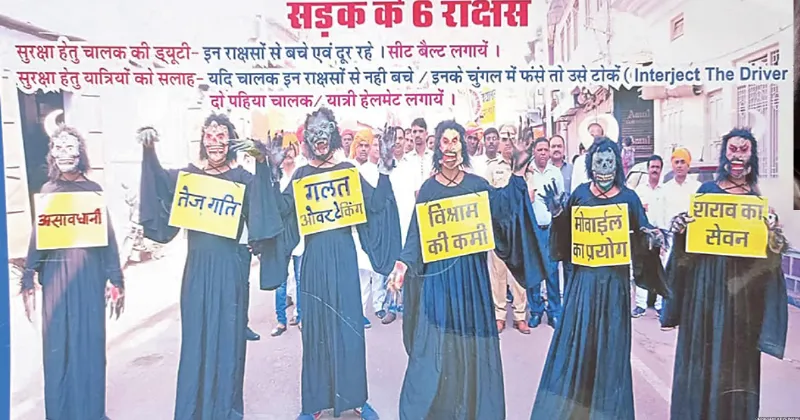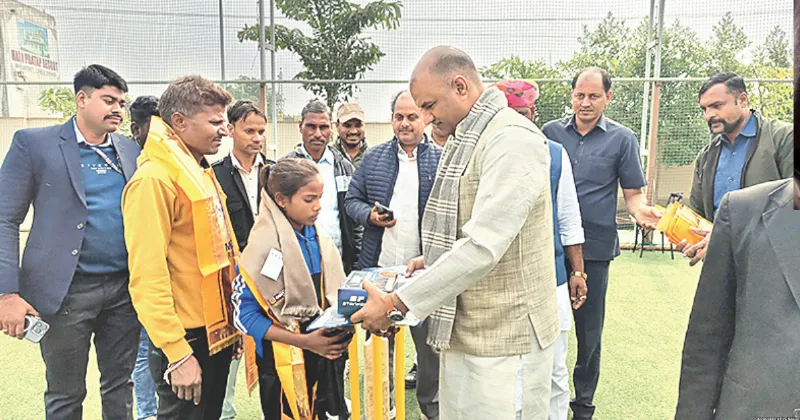Latest News
DAASTAAN-E-SHAHADAT The immortal tale of the sacrifice of Sahibzadas of Guru Gobind Singh Ji

The history of India from the 15th to the 17th century is full of many real life tales of sacrifice, martyrdom and bravery of Sikh Gurus, but this history is incomplete without the respectful and sad mention of the martyrdom of four Sahibzadas Baba Ajit Singh, Baba Jujhar Singh, Baba Fateh Singh and Baba Zorawar Singh of the tenth Guru of the Sikh tradition, Guru Gobind Singh Ji. The word Sikh is derived from the Sanskrit word “Shishya”, which literally translates to “learner”. Sikhs, as a community, are a symbol of true discipleship and always being ready to learn and the Sikhs follow the path shown by revered Gurus from Guru Nanak Dev Ji to Guru Gobind Singh Ji. Sikh Gurus played an important role in uniting and empowering the society which was suffering from foreign invaders, inequality, evils and stereotypes from the 15th to the 17th century. Guru Nanak Dev Ji, the founder of Sikhism, initiated revolutionary changes in religious and social fields by adopting the dialogue and openness of the Sanaatan tradition. The life philosophy, personality and deeds of the tenth Guru, Guru Gobind Singh Ji were the culmination of this martial tradition. His father Guru Tegh Bahadur ji had been martyred in 1675 in Chandni Chowk, Delhi for the protection of tilak and janeau of the Hindu religion and against forced conversion. In 1699, on the day of Baisakhi, he took a personal initiative and founded the Khalsa Panth. Khalsa means - pure and codified with Sikh identity.
The rulers of the time considered this initiative of Guruji a threat to their authority and arbitrary supremacy. After fighting many wars against some of the tyrannical rulers of the time, on the night of 20 December 1704, he reluctantly left Anandpur Sahib, the abode of bliss, in midst of bone-chilling cold. The eldest Sahibzada of Guruji, Baba Ajit Singh Ji, led the charge against the persistent pursuers. The second Sahibzada, Baba Jujhar Singh Ji, who was also an exceptional warrior, took command and defeated the enemy. Meanwhile, Guruji reached raging Sirsa river in bitter cold. Meanwhile, Guruji’s mother, Mata Gujri and his younger Sahibzadas, Zorawar Singh and Fateh Singh, suddenly met Gangu, an old servant of the house, who promised to take them safely to his village. Also, a loyal Sikh from Delhi offered to escort Guruji’s wife to safety. Guruji’s contingent was reduced to forty Sikhs and his two elder Sahibzadas, Baba Ajit Singh and Baba Jujhar Singh. Guruji stayed in a mud-walled fortified house in the village of Chamkaur. He arranged for defence by dividing his small army to cover each side of the improvised fort. Alam Singh and Man Singh acted as sentinels while Guru Ji, his two elder Sahibzadas and warriors Daya Singh and Sant Singh stationed themselves on the top floor. By nightfall only 5 Sikh warriors were left. These 5 took the pledge as the Panj Pyaras and urged the Guru Ji to leave Chamkaur for the sake of the future of the Khalsa Panth.
The Sikhs faced insurmountable odds despite their fierce arrows and stormy fighting. The battle of Chamkaur (22 December 1704) claimed the martyrdom of two of the four Sahibzadas of the Guru in a single day. Meanwhile, near Sirhind, the two younger Sahibzadas of the Guru, who were not even in their teens, bravely faced the sword of the executioner and also treachery. Gangu, who was given the responsibility of Guruji’s younger sons and their grandmother after crossing the Sirsa river, betrayed them. Gangu stole Mata Gujri’s belongings and feigned ignorance when confronted, blaming others for the same. Gangu informed the village headman about Guruji’s family. The headman, eager to retain important hostages, took custody of Guruji’s two younger Sahibzadas and their grandmother and finally handed them over to Nawab Wazir Khan of Sirhind. When summoned to appear before Wazir Khan, the two Sahibzadas surprised everyone by boldly saying, “Waheguruji ka Khalsa, Waheguruji ki Fateh”. The Sahibzaadas, who were only 7 and 9 years old, insisted that they neither wanted money nor position, they were ready to sacrifice their lives but not their religion. Wazir Khan ordered them to be locked up in the Thandi Burj ‘jail’. Later both these Sahibzaades were bricked alive into the wall (27 December 1704). Both accepted their death but remained steadfast on their religion. Many Indians from all sections of the country, including those who believe in the Sanatan tradition, sing on the martyrdom of these Sahibzaades that “kabhi parvat jhuke bhi hain, kabhi dariya rooke bhi hain, nahi rukti ravaani hai, nahi jhukti jawani hai, gurugobind ke bachche, umar mein the abhee kachche, magar the singh ke bachche, dharm imaan ke sachche, joraavar jor se bolaa, fateh singh shor se bola, rakhon eentein bharon gaara, chuno deevaar hatyaare, nikalatee shvaas bolegee, hamaaree deh bolegee, hajaaron baar bolegee, hamaare desh kee jay ho, hamaare dharm kee jay ho, pita dashmesh kee jay ho, shree guru granth kee jay ho’’. (The flow of youth does not stop, the youth does not stop. Guru Gobind’s children were still young but were the children of a lion, true to their religion and faith, Joravar spoke loudly, Fateh Singh spoke loudly, lay the bricks and fill the mortar, build the wall, murderers, our breath will speak, our body will speak, it will speak thousands of times, victory to our country, victory to our religion, victory to father Dashmesh, victory to Shri Guru Granth”).
THE VIEWS EXPRESSED BY THE AUTHOR ARE PERSONAL
Sardar Jasbir Singh: The writer is former Chairman of Rajasthan Minorities Commission and National Working President Forum for Awareness of National Security.






















